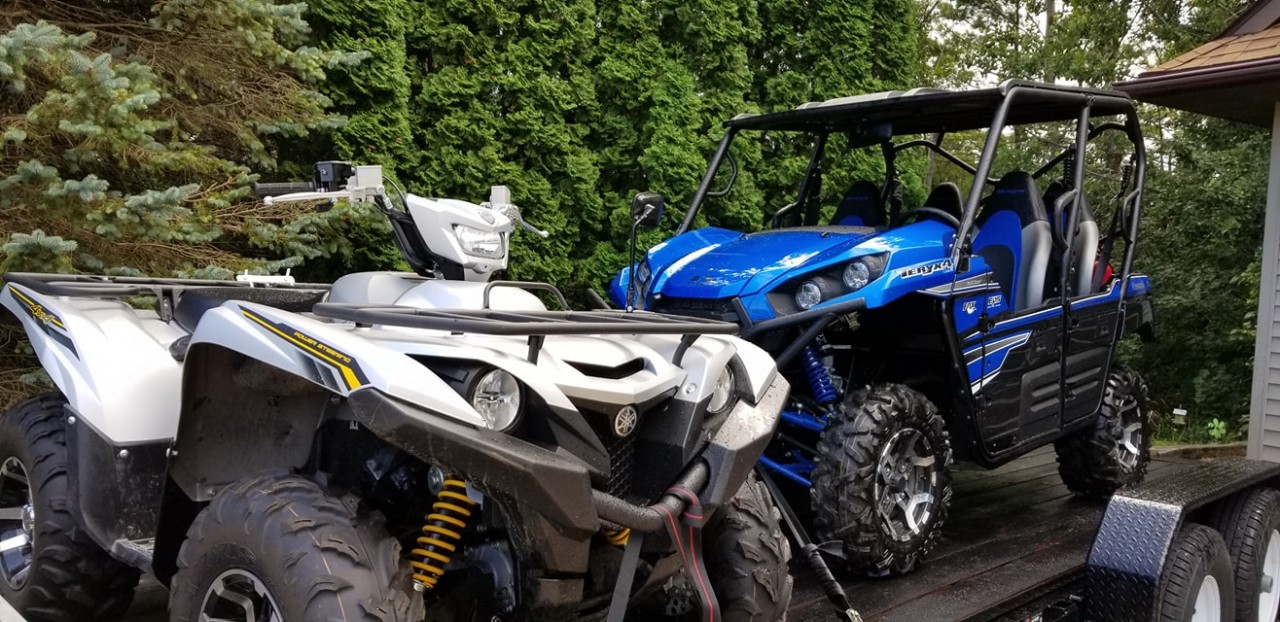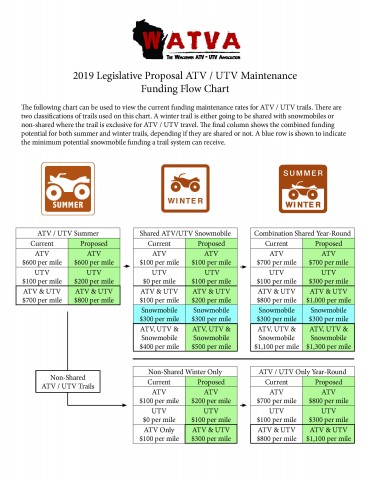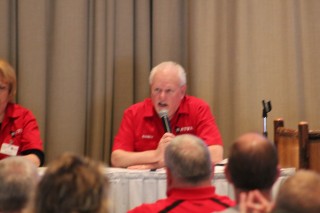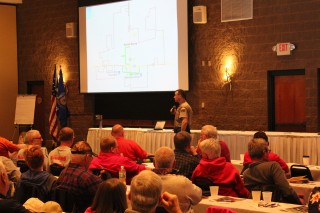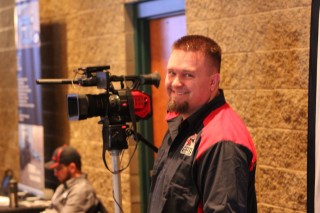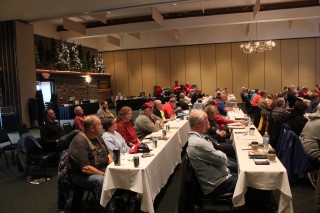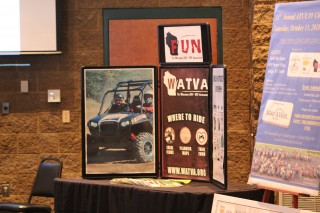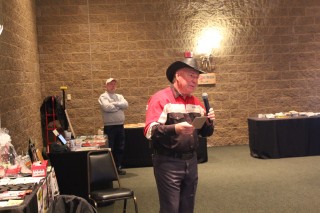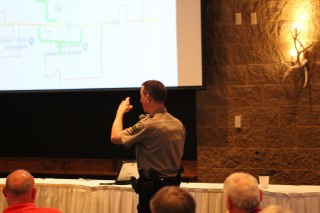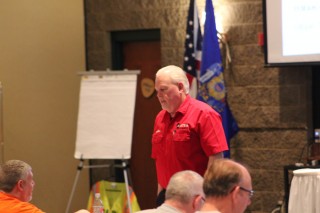After so many meetings too numerous to count, our WATVA leadership team has brought forward numerous registration program updates, corrections, and changes that were asked of us by many different program partners.
On February 20th, our Senate bill was passed. On February 21st, our Assembly bill was passed. We would like to thank those that helped with the call to action and supported us in this bill. We are awaiting the Governors signature into law.2019 Senate Bill 583
Act 183

Wisconsin Legislature: 2019 Wisconsin Act 183
The Wisconsin ATV / UTV Association is requesting a bill that makes adjustments to the state's ATV / UTV program based on the need to adapt and grow the program for expanded trail access.
This legislation enhances the ability to improve, update, and adjust to the evolution and growth of the ATV / UTV registration program in Wisconsin.
Since the 2012 legislation passed that permanently introduced and registered the Utility Terrain Vehicle (UTV aka Side x Side), our organization has been gathering input from our multitude of local clubs, trail ambassadors, associated businesses, tourism affiliates, federal, state, county and local units of government that deal with our recreational industry of ATV UTV owners.
This legislation is a package of multiple upgrades and changes that address the continuing growth of our registration numbers, providing solutions necessary to better manage the registration program into the future.
The following bullet points capture the majority of changes being proposed for our ATV / UTV program (for further explanation, see the additional pages in this document):
- Remove the words "low pressure tire" from the tire requirement found in the definition of an ATV or UTV.
- Clarify how to measure the width of an ATV and/or UTV, which is a requirement for the definition of an ATV and/or UTV in statute.
- Ease and simplify the registration requirements for municipally owned ATVs and UTVs.
- Address and establish rules for auxiliary lighting on ATVs and UTVs based on feedback from users, land managers and law enforcement officers.
- Make headlights mandatory for all times of the day on the trail to match the current law that requires headlights being lit on road routes.
- Create a statutory requirement that riders must obey regulatory signs (stop, yield, etc.) on the trail.
- Open further funding resources from the ATV segregated account for statewide mapping projects by non-profit organizations.
- Add $100 per mile for winter trail maintenance funding on trails that allow UTV vehicles in winter.
- Summer trail maintenance dollars will be increased by $100 per mile on the UTV side of the program, increasing the total maximum amount for maintenance to increase by 14% or up to a maximum of $800 per mile.
- Clarifying where someone can be tried in a court of law for falsifying registration information.
- ATVs that are not designed from the manufacturer for passengers are no longer allowed on the trail (it had already been illegal on route systems for some time).
1. Remove the words "low pressure tire" from the tire requirement found in the definition of an ATV or UTV.
Low pressure tires definition in current statute is no longer relevant because of technology changes in ATV UTV suspensions. Tire technology itself has changed dramatically including radial designs with a plethora of different tread options. These facts, along with the reality of the recent trend of having thousands of miles of road route expansions, make low pressure tires a definition no longer needed.Another factor is the multi-passenger UTVs requiring the newest tire technology where as required air pressure is much different than on single passenger ATVs. The simple answer is to stipulate the definition be "tire" which allows the latest tire and design technology to address machine needs based on different uses and models.
2. Clarify how to measure the width of an ATV and/or UTV, which is a requirement for the definition of an ATV and/or UTV in statute.
Dating back to 2007 through 2011, a time when we here in Wisconsin were conducting the pilot testing to determine if the UTVs were compatible with our ATV trail footprints, the UTV industry had yet to develop certain standards that we could consider using in our definitions as the legislature made the UTV registration permanent in 2012. One such subject was in defining "where" to measure maximum width of the machines...Since that time, the industry has now caught up, they added a width measurement standard which this legislation adopts for consistency that benefits our riders, dealerships, and law enforcement professionals alike.
3. Ease and simplify the registration requirements for municipally owned ATVs and UTVs.
The UTV popularity with its appeal and diversity, including utilitarian work purposes for many local and county governments is addressed with this legislation. It eases the process originally designed more for public trail and route use versus these units serving as work vehicles for these local units of government. If the government entity clearly designates the machine is owned by their government entity, under this change they would no longer be tasked with the registration process and subsequent identification requirements that trail riders are. This streamlined update also allows leased vehicles to be included whether being used for utilitarian, emergency or enforcement purposes. It further clarifies when being used for emergency response uses, the current requirements for passenger restrictions, seat belts, helmets etc. are not required.
4. Address and establish rules for auxiliary lighting on ATVs and UTVs based on feedback from users, land managers and law enforcement officers.
A dangerous trend has developed with the advancement in aftermarket and original equipment auxiliary lighting technology. High intensity lights are being added with no requirement for dimming lights to oncoming traffic. This has resulted in multiple complaints and dangerous situations. Another issue being addressed has to do with a different kind of aftermarket lighting. This language specifies that only emergency response vehicles are permitted to have flashing red or blue lights on trail systems, staying consistent with road route compliance. Currently auxiliary light options are being sold and used with red and blue colors by the general public, this legislation fixes that omission.
Lighted whips are still legal, however they are restricted in color to Amber or white (forward facing). This is to stay consistent with road route laws that already prohibit certain colors of lights.
The following rules language specifies the new lighting requirements:
23.33 (6) (cd) Except as provided in sub. (11m), no person may operate an all-terrain vehicle or utility terrain vehicle that is equipped with any of the following:
1. A lamp that emits any color of light other than white or amber and that is visible from directly in front of the all-terrain vehicle or utility terrain vehicle.
2. A lamp that emits any color of light other than red, yellow, amber, or white and that is visible from directly behind the all-terrain vehicle or utility terrain vehicle.
3. A flashing, oscillating, or rotating lamp that emits any color other than yellow or amber.
5. Make headlights mandatory for all times of the day on the trail to match the current law that requires headlights being lit on road routes.
Because ATV UTV riding networks include thousands of miles of routes that intermix and combine with trail systems, currently riders are required to have headlights lit for routes but not on trail systems. Some trails are under thick tree canopies that make for a darker riding condition. When combined with dusty scenarios, it enhances everyone's safety to require headlights lit on trails as well as routes. This is another example of making the ATV UTV law consistent, whether riding on trails or routes, the law will now be the same.
6. Create a statutory requirement that riders must obey regulatory signs (stop, yield, etc.) on the trail.
Currently there is no statutory requirement in 23.33 that requires trail riders to comply with stop, yield, or other regulatory sign on our trail systems. The ATV UTV program registration program that started in 1986, never anticipated the growth we've had and continue to experience. Our total number of machines registered is approximately 400,000 strong and still growing. Most riders aren't aware there are no requirements to comply with regulatory signs on trail systems but as we keep expanding, it's high time to correct this omission. In the early years, there was little chance or need to have this provision, that's not the case nowadays. Another adjustment to make the law consistent whether on road routes or trail networks.
7. Open further funding resources from the ATV segregated account for statewide mapping projects by non-profit organizations.
A major benefit to the business community, as well as the Wisconsin general economy, depends on attracting riders from out of state as well as new riders in Wisconsin coming into this type of outdoor recreation. A major tool that all riders seek are "where the riding opportunities exist" by way of a statewide riding area map. For these specialized maps to be effective, they need to be shipped to tourism centers, registration locations as well other tourist attractions where riders and potential riders can obtain them to make their travel plans accordingly. The state association has been able to secure temporary funding to produce these statewide maps, proving they are a desired and sought-after product. This update allows for a stable funding source for a statewide map using the stability of the ATV UTV registration program, self-funded to promote our own trail networks. This update also updates eligibility for a statewide app which is the current trend in society. As well, the self-funded ATV account would make eligible the acquisition to secure safety and public awareness signage that are currently not being displayed. This update also provides for communications equipment needed to enhance the safety and productivity for the dedicated volunteers doing trail and ambassador work in the back-country of Wisconsin.
8. Add $100 per mile for winter trail maintenance funding on trails that allow UTV vehicles in winter.
With the growing popularity of the enclosed cabs on the side x side UTVs, winter trail riding has increased greatly. In some areas of the state, the consumer is purchasing a UTV versus a snowmobile as it can be used year-round. The original UTV laws did not anticipate heated and enclosed cabs or winter use at all. This update adds an increase for the UTV side of winter funding of $100 per mile even if the winter trail is not used in the summer season. Likewise, this update provides for a new type of winter trail that may not necessarily be shared with the snowmobile community, referred to as a frozen ground winter trail. This new opportunity will apply to areas of the state that receive the cold weather but light snow cover.
Click the link below to download a PDF of the flowchart, including a page that will estimate your maintenance dollars per mile with the current system and the proposed system.
9. Summer trail maintenance dollars will be increased by $100 per mile on the UTV side of the program, increasing the total maximum amount for maintenance to increase by 14% or up to a maximum of $800 per mile.
Summer trail maintenance dollars will be increased by $100 per mile on the UTV side of the program, increasing the total maximum amount for maintenance to increase by 14% or up to a maximum of $800 per mile. With increased traffic and larger UTVs, this increase is necessary to sustain our ability to maintain our resources.
10. Clarifying where someone can be tried in a court of law for falsifying registration information.
The original registration program of the 1980s could never had predicted the ever changing and developing ATV UTV industry. Equipment manufacturer's now build many different models and sizes, some designed for use out west in desert and/or wide-open type riding while other models are designed for narrower and smaller trail systems which better describe our woods riding here in Wisconsin. This situation has created confusion for the consumer who can legally purchase a machine that is outside of our state description of what a legal UTV or ATV is, but they later discover they can't ride it when their registration application is eventually returned. In some cases, however, the application / applicant for legal registration omits a certain model designation, yet with other examples of falsified models listed and being sent to the DNR registration bureau. Unfortunately, the state estimates as many as 10,000 machines may have already been registered when the fact is the machine is too wide or too heavy to meet the agreed upon size dimensions our trail footprints are planned around and built upon because of the falsified applications. Eventually the consumer discovers they either purchased a machine that was outside the legal parameters to be registered, only to discover they can no longer register or ride on our trail networks or even worse they are cited when discovered when riding out on the trail networks. The unscrupulous retailer bears no financial recourse under current law, simply because the original registration program is outdated. Under our change, we are clarifying where someone can be tried in a court of law for falsifying registration information.
11. ATVs that are not designed from the manufacturer for passengers are no longer allowed on the trail (it had already been illegal on route systems for some time).
During the bill signing, a line item veto power was executed which changed how the law was worded.
The new law made riding with passengers on an ATV or UTV that was not originally manufactured for passengers illegal on public trails (it was already illegal on roadways). However, the new law does allow passenger use on ATVs or UTVs not originally intended for passengers during an emergency situation for public safety entities. This would help protect those entities from lawsuit's that might arise during these types of operations, which occur throughout the year during rescue missions in remote areas.
Also adding to the confusion was the fact that passenger use on an ATV or UTV that was not originally intended for passengers was already illegal on public road routes and had been illegal for some time.
Sometimes the complexities that surround an issue are not as they first appear. We might think we understand what we're dealing with but when we dig deeper and pull away the layers, we often find something completely different.
To make a situation more complicated, others may disagree with how we want to approach the situation. A proper situation appraisal is an important step because often issues like this are found to have a tangle of divergent elements, varied opinions, different priorities or possibilities for solutions toward different needs.
Below is the wording from Act 183 regarding passenger use on All-Terrain Vehicles:
SECTION 12. 23.33 (3) (em) of the statutes is amended to read:
Act 183
23.33 (3) (em) With Except as provided in sub. (11m), with a passenger riding in or on any part of a an all−terrain vehicle or utility terrain vehicle that is not designed or intended to be used by passengers while the all−terrain vehicle or utility terrain vehicle is being operated on an all−terrain vehicle route, all−terrain vehicle trail, or roadway as authorized in this section.
In a press release after signing Act 183, Governor Evers wrote:
"I have exercised the partial veto in Section 25, relating to being a passenger on an allterrain vehicle or utility terrain vehicle on public and private land. Current law prohibits a person from being a passenger on a utility terrain vehicle, regardless of location, if said vehicle is not designed for passengers. Section 25 would prohibit a person from being a passenger on an all-terrain vehicle or utility terrain vehicle that is not designed for passengers only on an all-terrain vehicle route, all-terrain vehicle trail, frozen water, or an authorized highway. This section would specifically not apply the prohibition to private property.
I am partially vetoing the requirement that the prohibition on unauthorized passengers only applies to designated routes and trails because I object to allowing the potentially unsafe operation of all-terrain vehicles and utility terrain vehicles in undesignated areas and on private land. If an all-terrain vehicle or utility terrain vehicle is not designed for passengers, then it should not be operated with passengers, except for those exceptions provided for in Section 33. The safe transportation of passengers, regardless of location, is essential to the prevention of injuries and fatalities associated with all-terrain and utility terrain vehicle use.
by Governor Evers
We have included the press release issued by Governor Evers below.
Furthermore, the Wisconsin ATV / UTV Association was recently made aware that this law already existed for any road route (meaning it was already illegal to carry a passenger on any road route in Wisconsin). WATVA was not aware of this law change.
Passenger use on ATV's varies between states. For example, Michigan, Iowa, California does not allow passengers unless the ATV is originally manufactured for a passenger. Minnesota has some restrictions depending on which type of ATV it is (they have Class 1 and Class 2 ATVs).
The ATV Safety Institute advises that adding passengers to an ATV that is not designed for passengers changes the center of gravity and impacts the ability for the rider to safely control the machine. For best riding tips and a guide on safety, please check out the ATV Safety Institutes guide by following the following link: https://atvsafety.org/wp-content/uploads/2018/03/ASI-ATV-Tips-Guide-2018.pdf
Last Edited May 26th 2020 at 14:15.

